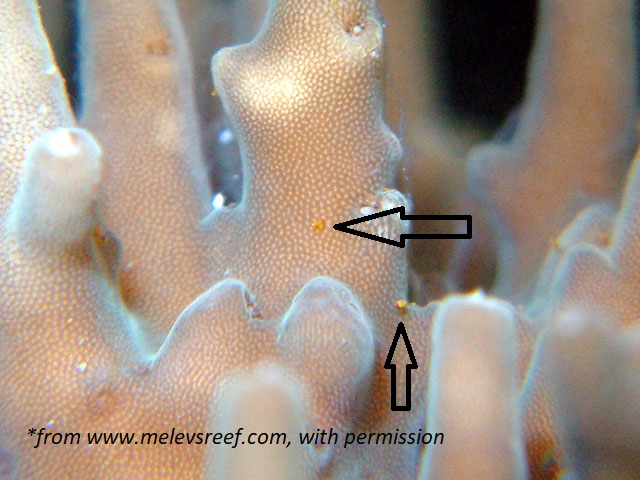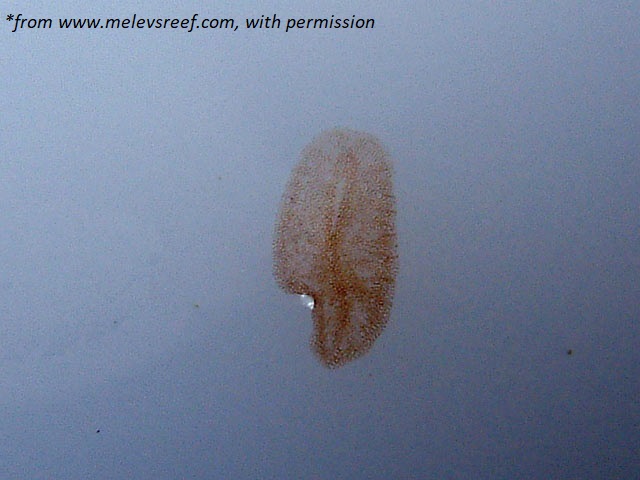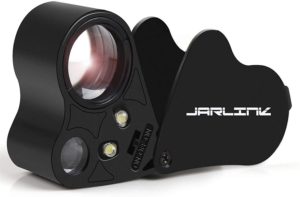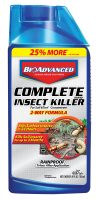How to properly quarantine your new corals
Why is parasite prevention important?
Quarantine, whether for fish or coral, is something you probably won’t pay much attention to until you experience a major problem. Like incurable diseases of the human body, prevention is by far the best approach to disease or pests. Although our goal is to replicate a slice of the reef in our own homes, we must be careful to only introduce what we intend and leave out the potential bad that sometimes accompanies our new pieces.
Before you even purchase your coral, the first thing you should do is consider the source. Are you buying from a local reefer or a retailer? Where did they get their corals from? Are they a pure aquaculture facility or do they get some or all of their stuff as wild or maricultured? Do they quarantine at all? What are their coral quarantine procedures? Do they just dip and throw it in with everything else, or do they have a dedicated separate quarantine method or system?
Generally, certain factors make your chance of contracting a pest greater. Here they are, listed from most risky to least risky:
- buying from a facility/reefer that has poor quarantine or doesn’t quarantine at all
- wild or maricultured colony
- wild or maricultured frag (chop-shop frag)
- aquacultured colony
- aquacultured frag that has been mounted and growing on a frag plug
- fresh/recently cut aquacultured frag

The reasoning behind that particular order is the following:
First, buying from someone or a retailer who doesn’t quarantine at all is the riskiest source. Second, corals not long removed from the ocean have the greatest potential for parasites or pests because that is their natural environment where there is a balance to keep them in check. Lets take Acropora-eating flatworms for example. Out in the reef there are predators of flatworms, such as certain fish and invertebrates. Even the perfect environmental conditions such as water chemistry, flow, and sunlight all probably help the coral’s immune system fight off parasites. But once you remove that coral from its natural environment, you remove nature’s checks-and-balances which allows AEFW to devastate our closed systems.
Make no mistake about it: buying wild or maricultured pieces, whether it be the entire colony or frags cut from them, is the riskiest way to buy coral. It’s also worth mentioning the high risk of the piece losing its color or even dying from the transition to aquaria.
And just because you bought it as a frag doesn’t mean it wasn’t recently removed from the ocean. If you don’t know what “Chop Shops” are, they are stores or even hobbyists who take maricultured or wild colonies, chop them up into frags, and sell them as fast as possible before they brown out, lose their colors, or even die. This is a common practice because of its relative high profitability and low overhead.
You can imagine the large turnover of maricultured corals, especially in large receiving facilities where quarantine is impractical and maybe even costly. In these facilities there is almost 100% chance AEFW is lurking in their tanks, and they will soon make their way to the LFS.
The point is not to diss anyone’s practices or stop you from buying from these sources. After all, all corals came from the ocean at some point. In fact, a couple of our unique pieces were bought as a mariculture/wild. (Although I would be remiss if I didn’t mention that only about 25% of the maricultured pieces that we ever bought turned into something decent.) Just know that this is the greatest chance of acquiring a parasite, such as AEFW or red bugs. This is why you must adhere to strict coral quarantine practices in order to avoid a devastating parasite infestation.
In general its more risky buying a colony than a frag. The size is a factor and the array of branches within a colony are hindrances to thorough inspection and can be hiding places or havens for parasites. Often colonies come with some dead branches on the bottom or are attached to a mount of some kind. Parasites like to hang out near the coral on dead branches or right below them when not actively feeding and is often where you will find their eggs. We always recommend cutting anything off that’s not healthy living coral tissue before placing it in your tank. This also includes cutting off a frag from its frag plug. Its not worth it. Doing this will also significantly decrease the chance of introducing other annoyances or nuisances such as bryopsis, bubble algae, majano anemones, aptasia, Etc.
The rest of this article will discuss the process that we follow and outlines our general recommendations for coral quarantine.
1. Temperature Acclimation
Your coral will come in a bag, which is perfect for the first step–temperature acclimation. We usually temperature acclimate for an hour, not only to let the water reach the same temperature, but also to let the coral relax in the new temperature for a little bit before its subjected to more changes.
2. Separation
In this step we physically remove the coral from any residue of the old system. This is where we cut the frag from the plug. It’s best to try to leave a millimeter or two of healthy coral tissue behind to make sure. Only the coral itself should go into your system. The frag plug, any glue, or any dead parts or branches should not be introduced into your tank.
3. Dip (if the coral is not stressed)
Next the cut-off corals will go straight into a tub of our own water. No drip acclimation is necessary, although it is not harmful. (You are just giving yourself more work if you drip acclimate a coral.) This is point when they will be dipped. However, and this is a huge “however”, if the coral is stressed out from a trip across the continental United States overnight, for example, dipping a coral in harsh chemicals can be detrimental and may cause death. This is why you must only buy corals online from reliable sources if you don’t have a quarantine tank. So you can comfortably delay dipping your new arrival for a couple days when it’s settled into your tank.
When considering Acropora, there are primarily two parasites of concern, Acropora-eating flatworms or AEFW, and red bugs. This should determine which dip you use. After all, when you go to the doctor, the disease will determine the treatment. With that in mind, I have no idea nor do I care whats in these brand-name coral dips.




For Acropora, you really just need BioAdvanced (formerly Bayer Advanced) Complete Insect Killer. This stuff is much cheaper than what is advertised as coral dip. Many of these dip-making -companies will make certain claims, but in reality they are all very similar–none of them safely kill AEFW. They may weaken AEFW, but so does inexpensive BioAdvanced Complete Insect Killer.
The ratio we use is about 7mL BioAdvanced per 1 cup of tank water. We dip our pieces for about 12 minutes. This will kill red bugs. For AEFW, its a little more complicated than that.
There is absolutely no dip that will kill AEFW without killing the coral at the same time. This is why dipping corals is simply not enough. However, BioAdvanced does weaken or paralyze AEFW enough to where they have a good chance of falling off. For this reason its good to provide gentle flow while dipping or use a turkey baster to blow at the corals to encourage this.
4. Rinse then Re-Mount for Easy Observation
After the dip, we rinse them off thoroughly a couple of times in tank water to remove the Bayer insecticide. Next is when we will mount them. They should be mounted to something that will let them be secure on a frag rack, ideally in a separate quarantine tank or on a frag rack in your tank (if you don’t have a QT). A common frag plug is perfect.

For encrusting or plating species, such as Montipora capricornis or encrusting Montipora, cut off any dead parts of the coral on the top and sides. Then do your best to cover the entire bottom of the frag with super glue or epoxy when mounting it. In contrast to Acropora or other branching or stick-like corals, it’s difficult or impossible to cut off every single part of dead coral, since the underside of these plating or encrusting corals are often dead. Using enough super glue or epoxy to cover the entire bottom will help cover up any Montipora-eating Nudibranchs, parasites, or eggs hiding down there.

5. Place in Quarantine Tank or Isolation for Close Inspection
After mounting on a fresh plug, they will go into the first of two quarantine tanks for several weeks. For those of you without a QT, its important that you put the frag on a rack far from the aquascape as possible to inspect it. Remember no dip will kill AEFW or Montipora Eating Nudibranchs so you need an easy way to inspect them for several weeks. If there is AEFW or MEN, having the piece separate from your rockwork may help prevent their spread to everything else and it allows easy removal of the piece. AEFW or MEN will usually show itself within a few weeks. Although it will be difficult actually to see the little buggers themselves, you may find AEFW bite marks. Or for MEN, you’ll see spots of missing tissue, or exposed white coral skeleton. Using a magnifying glass or using the camera on your phone will aid in the inspection process. Nighttime inspection with a flashlight is also a great idea.
We will usually keep the corals in this first stage of quarantine for about 6 – 8 weeks. You should see them starting to encrust and maybe even grow if they are healthy during this stage. For most aquarists with 1 or no quarantine system, it is reasonable to assume they are okay to mount to the rockwork permanently if they look healthy and you can’t find anything with your diligent inspection after this time. Here at Coral Euphoria, we have an additional quarantine tank/step, as an extra precaution, before introducing anything into our main system. We keep and inspect the corals in a separate, second stage tank for about 4 – 6 weeks.

Tip: Pick up an inexpensive jewelers eye loupe to inspect your new acquisitions for parasites.
Conclusion
In summary, consider the reliability of your source; cut off or thoroughly cover up anything that’s not living coral tissue; dip them (if they are not stressed); put them in quarantine or isolate them as much as possible; inspect them everyday, twice a day; and remember that an ounce of prevention is worth tons of cure.

Hi Jane,
Ultimately it’s up to you, but I can tell you that I am particular about preventing harmful parasites and I don’t have any in my system (that I know of). Also, it has been a long time since I added new pieces to my tanks, so any problems would have showed up by now.
Hi Abe,
I placed an order for several of you frags yesterday. I don’t have frag plugs to remount your incoming frags onto. Do you think I need to remount the frags coming from your system? Thank you.